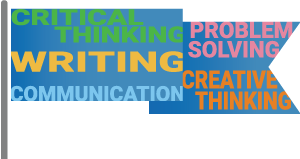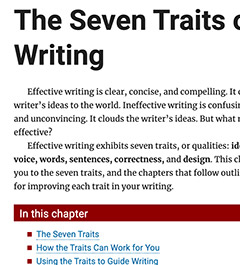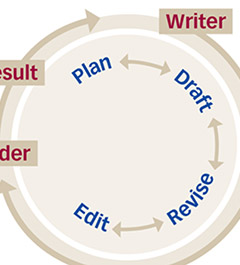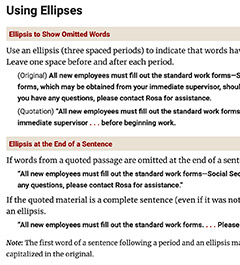Schools and Colleges

Prepare Students for Career Success
Education World outlines the "missing links" in preparing students for workplace success, including written and oral communication, problem solving, collaboration, and creative thinking.
“An email documents ideas, relationships and process, so it is crucial to have the writing skills for clear, concise, and appropriate communication. Also, because more and more work is done in teams made up of people from throughout the world—face-to-face and virtual—culturally sensitive communication reflecting global awareness takes on a greater importance than ever before.”
—Karen Collias, Educational Consultant
Traditional ELA resources teach academic reading and writing, but they do little to teach workplace communication and these other key skills. Employers identify writing, communication, critical thinking, and problem solving as the most needed skills today, skills that will drive successful careers into the future.
You can use the Write for Business Courses, Guide, and eTips to teach:
- Supplement existing syllabi and course tracks with Courses.
- Subscribe classes to eTips for ongoing, workplace-focused lessons.
- Teach students to use the reference Guide now; they have free access at their fingertips for life!
Review the free course, Effective Emails and Messages, today.
Find out why professionals need strong writing skills and why you can trust Write for Business. You can also check out the research basis for our materials.
How can I use Write for Business Courses in my classroom?
I'd like a teaching assistant for workplace writing.
Teach workplace writing with materials that do much of the grading for you.
You can use these fully interactive online courses as your main curricula for workplace communication or as supplements. Your students read instruction, watch videos, complete activities, and take quizzes and assessments. These courses can be self-paced and on-demand, or you can provide direct instruction, monitor the progress of your whole class, and drill down to the answers of specific students. You can also rename the courses and brand them with your institutional logo.
Your students can take the first, brief course for free just by signing up.
Then check out the other five courses, which progress from basic grammar to high-level writing:
- Effective Emails and Messages Free
- Grammar for Professionals
- Fundamentals of Writing
- Writing for Results
- Clear Writing Through Critical Thinking
- Executive Writing
Want to learn more? Take a Course walkthrough.
How can I use the Write for Business Guide with students?
I need a reliable workplace-writing handbook.
Use the free, online third edition of the Write for Business Guide.
The Write for Business Guide works like any other writing handbook—except that it's free online. You can use this guide as your authoritative workplace writing reference, providing answers that align with the Chicago Manual of Style:
- Teach practical strategies throughout the writing process.
- Help students improve the seven traits of business writing.
- Present guidelines, models, and checklists for key workplace writing forms.
- Use the "Proofreader's Guide" to teach the rules of punctuation, mechanics, usage, grammar, and sentences, giving special support to English language learners.
You'll find that Write for Business Courses and eTips link extensively to the Guide, helping students learn how to use it and return to it in your classroom and on the job. Consider also the print editions of Write for Business and Write for Work, which are used by schools such as the University of Wisconsin-Whitewater and Gateway Technical College.
How do Write for Business eTips support my students?
I want my students to practice workplace writing.
Have them sign up for free weekly eTips that teach practical skills.
Your students can also sign up for free eTips—weekly micro-learning opportunities used by thousands of workplace writers. Each eTip presents a practical strategy for workplace communication and provides an activity that students can use to apply their learning. Links to the Write for Business Guide help students find more support. Discover how eTips and other supports from Write for Business help you combat the "forgetting curve."
Check out these recent eTips:
Next Steps
- Create an account Visit your Library to review Writing Effective Emails and Messages.
- Subscribe to eTips to see their ongoing value to clients and colleagues.
- Download the Key Forms of Business Writing PDF for help with teaching correspondence, reports, proposals, and instructions.


